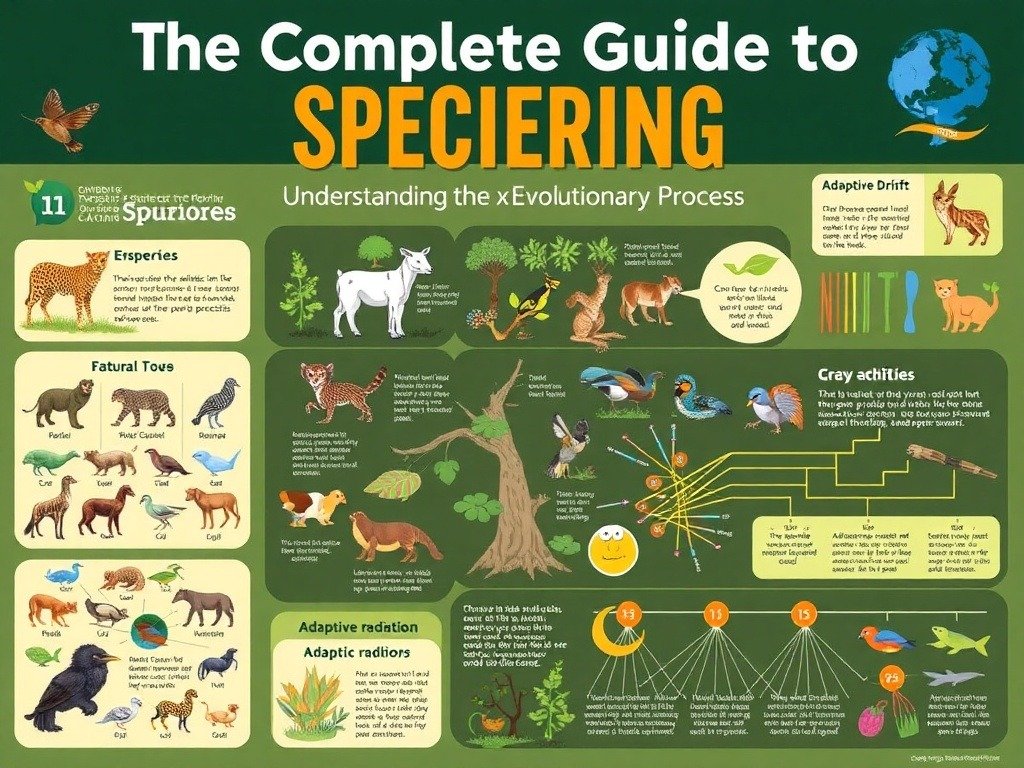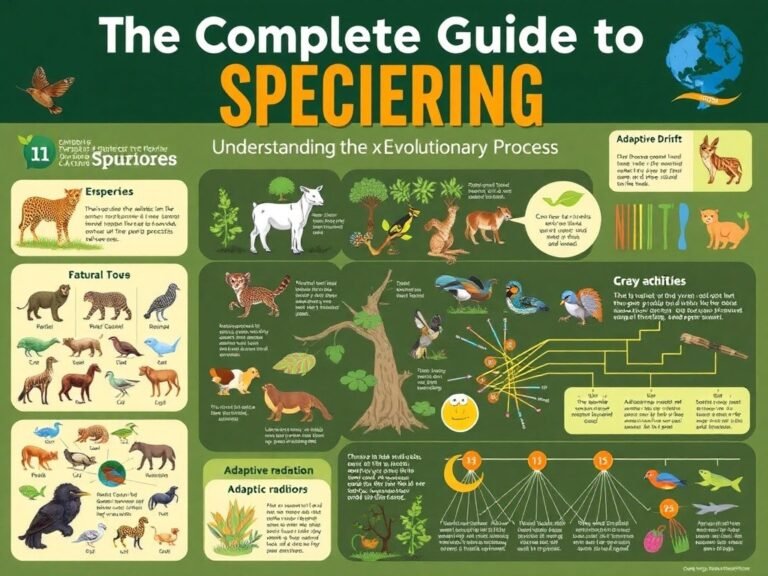
Introduction to Speciering
The term speciering might not be a common part of everyday conversation, but it holds significant importance in scientific and environmental discussions. At its core, speciering refers to the process by which a species forms, diversifies, or is categorized based on certain distinguishing characteristics. This process can occur naturally over evolutionary time or through deliberate scientific classification methods. Understanding speciering is essential for fields like biology, ecology, and genetics because it helps us trace the development of life, comprehend biodiversity, and recognize the importance of species adaptation in changing environments. This concept not only connects us to the past of life on Earth but also plays a role in future conservation strategies and ecological balance.
Historical Background of Speciering
The concept of speciering has deep roots in natural history, dating back to early naturalists like Charles Darwin and Alfred Russel Wallace, who studied the variations and adaptations of species. In their observations, they noticed that isolated populations could develop unique traits over time, eventually becoming distinct species. Over the centuries, as technology and scientific methods advanced, the process of identifying and defining species became more precise. From simple morphological observations to advanced genetic sequencing, the methods used to study speciering have evolved significantly. This historical progression highlights humanity’s growing understanding of the natural world and our role in classifying its diversity.
The Biological Foundation of Speciering
Speciering is closely tied to the biological process of speciation, which is the creation of new and distinct species during evolution. Speciation can occur through mechanisms such as geographic isolation, ecological niches, and reproductive barriers. In nature, populations can be separated by mountains, rivers, or climate differences, leading to genetic divergence over generations. This gradual separation can result in organisms that no longer interbreed, marking the completion of speciering. This biological foundation is critical because it shows how biodiversity is not static but constantly changing, adapting, and expanding.
Different Types of Speciering
There are multiple forms of speciering, each influenced by environmental, genetic, and behavioral factors. These include allopatric speciering, where geographic isolation plays a major role; sympatric speciering, where new species emerge within the same habitat; parapatric speciering, where populations are separated by partial barriers; and peripatric speciering, which involves small isolated groups. Understanding these types allows scientists to predict and explain biodiversity patterns. For example, island ecosystems often showcase allopatric speciering due to their isolation from mainland populations.
The Role of Genetic Variation in Speciering
One of the main drivers of speciering is genetic variation within a population. Mutations, gene flow, and genetic drift can lead to differences in traits over time. These genetic differences may provide certain groups with advantages in survival and reproduction, leading them to become distinct from other members of their species. The study of DNA has revealed that even subtle genetic changes can set the stage for major evolutionary shifts, emphasizing the critical role of molecular biology in understanding speciering.
Environmental Influence on Speciering
The environment plays a decisive role in shaping how speciering unfolds. Changes in climate, habitat destruction, food availability, and predator-prey relationships can all drive populations toward divergence. When organisms face new environmental challenges, they must adapt or risk extinction. Speciering becomes a survival mechanism, allowing life to persist through transformation. For instance, polar animals developing thicker fur or desert plants evolving water storage mechanisms are direct results of environmental pressures.
Key environmental factors influencing speciering include:
- Geographic isolation due to natural barriers
- Climate shifts and seasonal changes
- Alterations in available food sources
- Predator-prey dynamics
- Human-driven environmental changes
Speciering in Modern Conservation Efforts
In conservation biology, understanding speciering helps in protecting endangered species and maintaining biodiversity. By studying how species diversify and adapt, conservationists can design better strategies to preserve genetic diversity and prevent extinction. For example, reintroduction programs for endangered animals often consider genetic distinctions within species to ensure the success of breeding and survival in the wild. Without knowledge of speciering, these efforts could unintentionally harm rather than help species recovery.
Human Impact on Speciering
Human activities such as urbanization, deforestation, and climate change are accelerating speciering in some cases while hindering it in others. Pollution and habitat destruction can reduce genetic diversity, limiting the potential for new species to form. On the other hand, the introduction of invasive species into new ecosystems can lead to rapid speciering events as native organisms adapt to the sudden changes. This dual effect makes human influence a major factor in modern evolutionary trends.
The Debate Around Speciering and Classification
While the science of speciering is well-established, debates still exist among taxonomists and evolutionary biologists regarding species boundaries. The question of “what exactly defines a species” is not always straightforward. Hybrid species, genetic overlaps, and ongoing evolution can blur these lines. Some experts argue that classification should focus more on genetic data, while others believe physical characteristics remain equally important.
Speciering in Microorganisms
Microorganisms such as bacteria and viruses undergo speciering at an incredibly rapid rate due to their short generation times and high mutation rates. This rapid speciering is why antibiotic resistance develops so quickly and why new viral strains constantly emerge. Studying microorganism speciering is vital for public health, as it helps scientists develop better treatments and preventive measures.
| Type of Speciering | Example | Timeframe |
| Allopatric | Darwin’s finches on Galápagos Islands | Thousands of years |
| Sympatric | Cichlid fish in African lakes | Hundreds to thousands of years |
| Microbial | Antibiotic-resistant bacteria | Months to years |
Case Study: Darwin’s Finches
Perhaps the most famous example of speciering comes from Darwin’s study of finches in the Galápagos Islands. Each island had finches with different beak shapes and sizes, adapted to their specific food sources. Over time, these variations became distinct species. This case remains a cornerstone example of how environmental conditions and isolation can drive the process of speciering.
Technological Advancements in Studying Speciering
Modern technology, such as genome sequencing, satellite tracking, and advanced imaging, has transformed our understanding of speciering. Researchers can now identify subtle genetic differences that were once impossible to detect. These advancements not only aid in species classification but also help predict how species might evolve in the future, particularly under climate change scenarios.
Speciering and Climate Change
Climate change is rapidly altering habitats, forcing species to adapt or migrate. This environmental upheaval can speed up speciering for some organisms while pushing others toward extinction. Species in polar regions, mountainous areas, and coastal zones are particularly vulnerable to these shifts, making the study of speciering even more urgent for biodiversity preservation.
Challenges in Speciering Research
Studying speciering is complex due to factors like overlapping species ranges, hybridization, and incomplete fossil records. Additionally, ethical concerns arise when humans intervene in natural speciering processes, such as through genetic engineering or selective breeding. Balancing scientific curiosity with conservation ethics remains a central challenge for researchers.
Conclusion
Speciering is more than just a scientific term; it is a window into the ongoing evolution of life. From the smallest microorganisms to the largest mammals, every species is part of a dynamic and ever-changing web of life shaped by genetics, environment, and time. Understanding speciering not only deepens our appreciation of biodiversity but also equips us to protect it in a rapidly changing world. As human impact on the planet grows, the importance of studying and respecting the processes that give rise to new life forms cannot be overstated.
FAQs
Q1: Is speciering the same as speciation?
Speciering is closely related to speciation, but while speciation describes the actual formation of new species, speciering can also refer to the broader categorization and differentiation process.
Q2: Can speciering happen in artificial environments?
Yes, speciering can occur in artificial settings such as laboratories, zoos, or farms, where controlled breeding and isolation can lead to distinct genetic lines.
Q3: Why is speciering important for biodiversity?
It helps maintain a variety of life forms, which strengthens ecosystems and supports adaptability to environmental changes.




